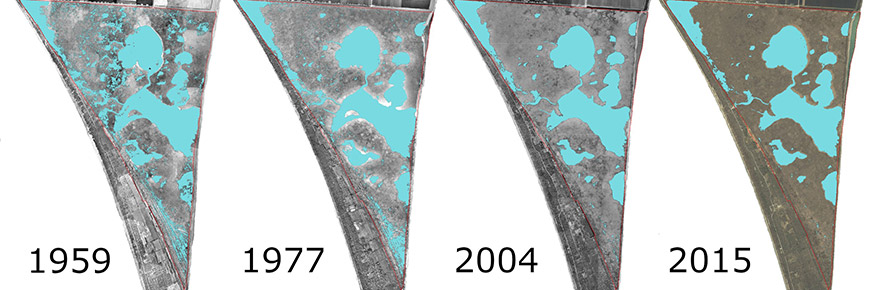A marsh under threat
Point Pelee National Park
The health of the marsh at Point Pelee National Park is in decline. Many threats over the years, such as development, erosion, and invasive species, have taken their toll on water quality, hydrology (the distribution and movement of water), wildlife and plant abundance, and habitat diversity. One of the most concerning issues is the loss of open water within the marsh. Since the 1950’s, open water habitat has reduced by 10 percent, or 100 hectares - that’s 140 soccer fields!

Why is this alarming?
Losing open water means losing open water habitat and the edge habitat where open water and the cattail mat meet. As habitat diversity is threatened, so too is the diversity of species (or biodiversity). The habitat provided by the cattail mat does its part to provide protection and nutrients to certain marsh species, but it cannot support the marsh’s remarkable biodiversity alone without open water channels and ponds.
Cattail mat covers over 50% of the marsh. As a visitor to the marsh boardwalk, cattails may appear to make up the majority of the marsh ecosystem. What is not obvious right away, is that the cattail mat in the marsh is sprinkled with a network of channels and ponds. This network breaks up the cattail mat, allowing for more diversity by providing different kinds of important habitat.
Within each channel and pond, open water meets specific survival needs of many marsh species. Fish travel through the channels, foraging for a variety of aquatic invertebrates, plants, and prey fish. Floating, submerged, and emergent (or surfacing) vegetation grow from the bottom and edges of these openings. Muskrats swim through the water and build their huts along the edges. Eventually, those huts may be used by snakes and turtles for basking, nesting, and hibernation. Even non-aquatic species that call the cattail mat home often rely on the open water to forage for their aquatic meals.
- Date modified :